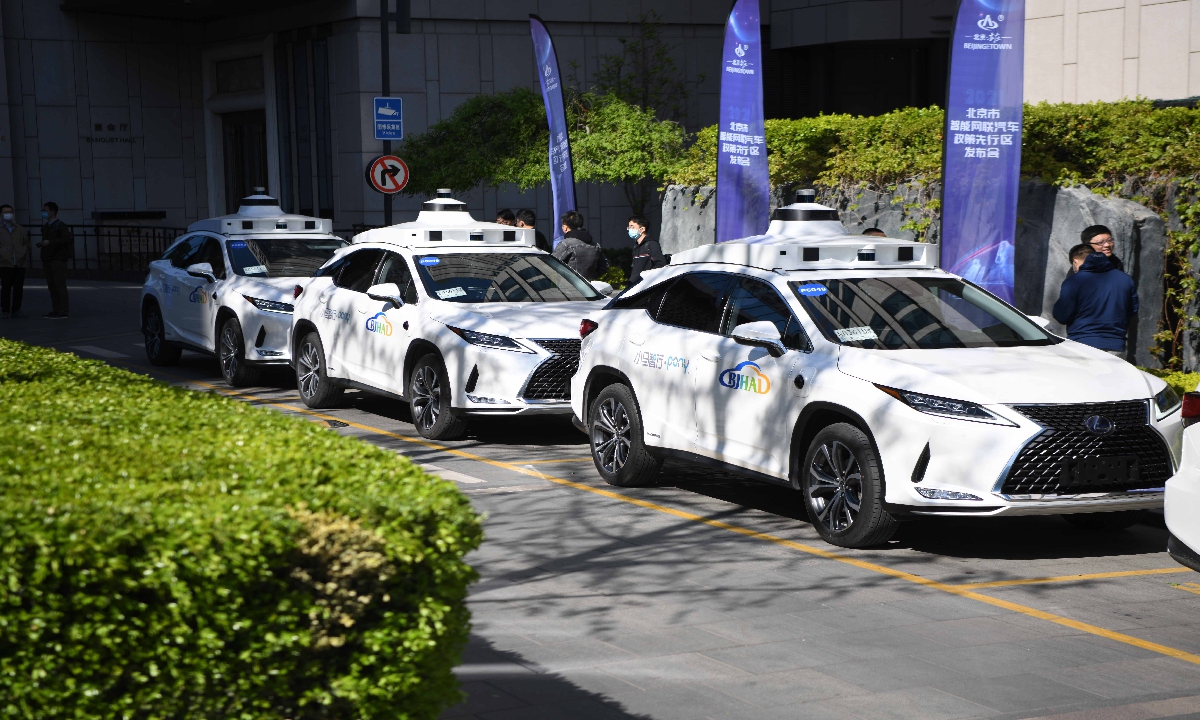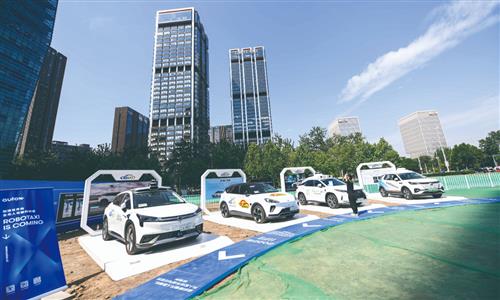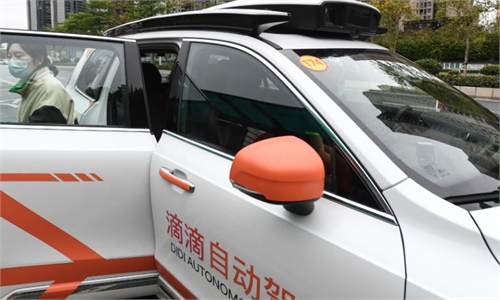China’s first-tier cities achieve quasi-commercial operation of self-driving services

A Pony.ai self-driving fleet in Beijing Economic-Technological Development Area, Beijing on April 13, 2021. Photo: CFP
China’s first-tier cities have achieved quasi-commercial operation of self-driving services, making a significant breakthrough, a Chinese official said Thursday.
The country’s self-driving application has generated scale effect with more than 1,000 vehicles entering operation by more than 100 start-ups, Sun Wenjian, spokesperson of the Ministry of Transport, told a press conference.
First-tier cities such as Beijing, Shanghai and Guangzhou, capital of South China’s Guangdong Province, have achieved quasi-commercial operation of self-driving services, and pilot sites such as Tianjin Port and Shanghai Port have deployed more than 200 self-driving trucks or self-driving horizontal transportation equipment, which are running at normal pace, according to Sun.
The commercialization of self-driving technology is gaining momentum in China, the world’s largest automobile market, thanks to continuous technological innovation and policy support, experts said, adding that China is at the global forefront in terms of research and development and adoption of cutting-edge technology.
In recent years, the Ministry of Transport has encouraged cities and firms to roll out pilot programs including robotaxi and V2X (vehicle-to-everything) systems.
Chinese autonomous driving start-up Pony.ai has secured the first license to demonstrate the use of Level-4 self-driving robotaxi services in parts of Shenzhen, Guangdong, at the end of September, making it one of the first companies to get permission to test self-driving technologies in all of China’s first-tier cities – Beijing, Shanghai, Guangzhou and Shenzhen.
Separately, China’s search engine giant Baidu in June obtained a commercial license from regulators for its driverless ride-hailing service in parts of Shenzhen.
Chinese regulators have divided autonomous driving into six levels from Level 0 to Level 5. Level-4 vehicles, or highly automated vehicles, refer to those that can drive completely autonomously in designated areas, a stage where domestic players have been focused on in promoting their robotaxi businesses.
China’s robotaxi services, moving toward the unmanned, large-scale, and commercialization stage, is believed to pave the way for smarter urban planning and transportation.
According to a report by BloombergNEF, China will operate the world’s largest robotaxi fleet with about 12 million units by 2040, followed by the US.
The Ministry of Transport has recently launched the second batch of pilot collection work in the hope to promote deep integration of autonomous driving technology and transportation by enriching application scenarios and expanding pilot scale.
A 56-km smart expressway, designed for Level-4 autonomous driving, has started operating as a test section near Suzhou, East China’s Jiangsu Province, this month, according to the Xinhua News Agency.
Global Times


